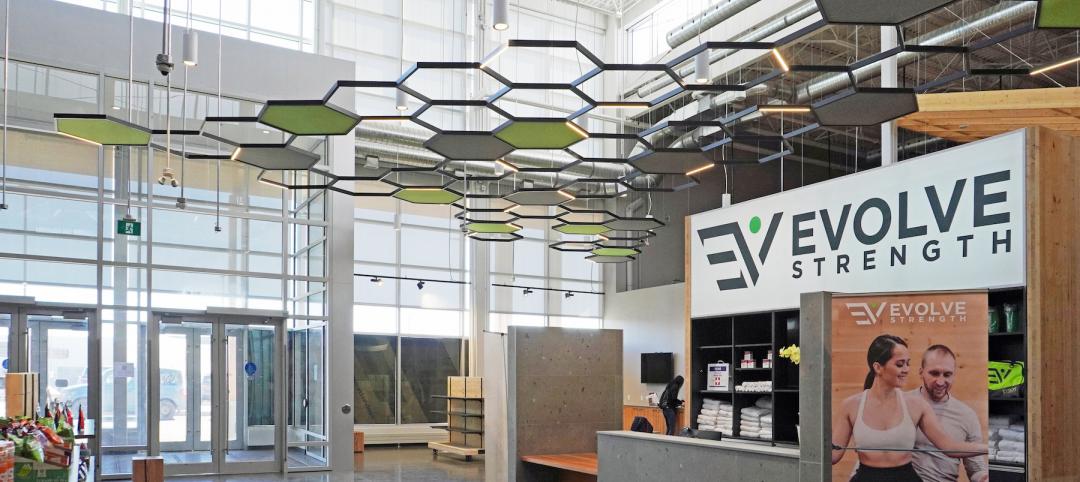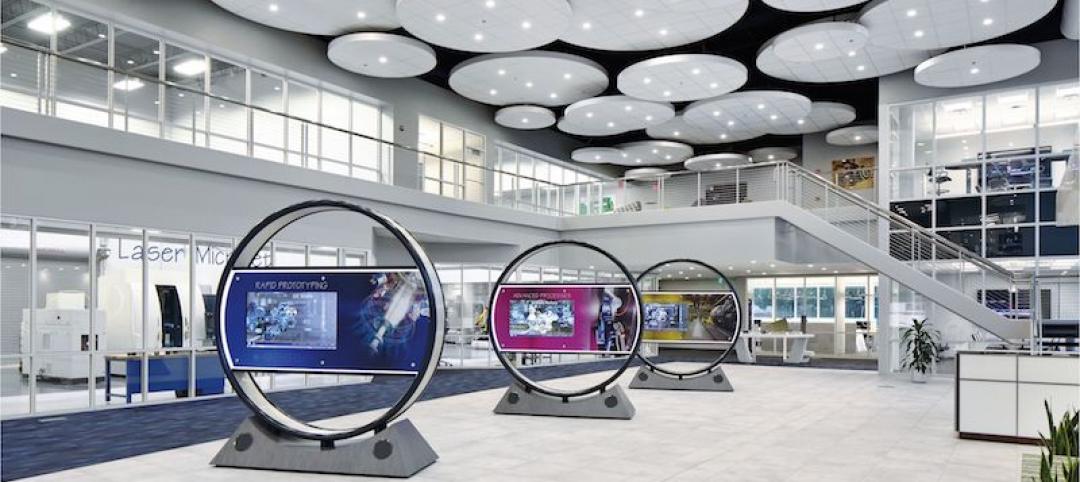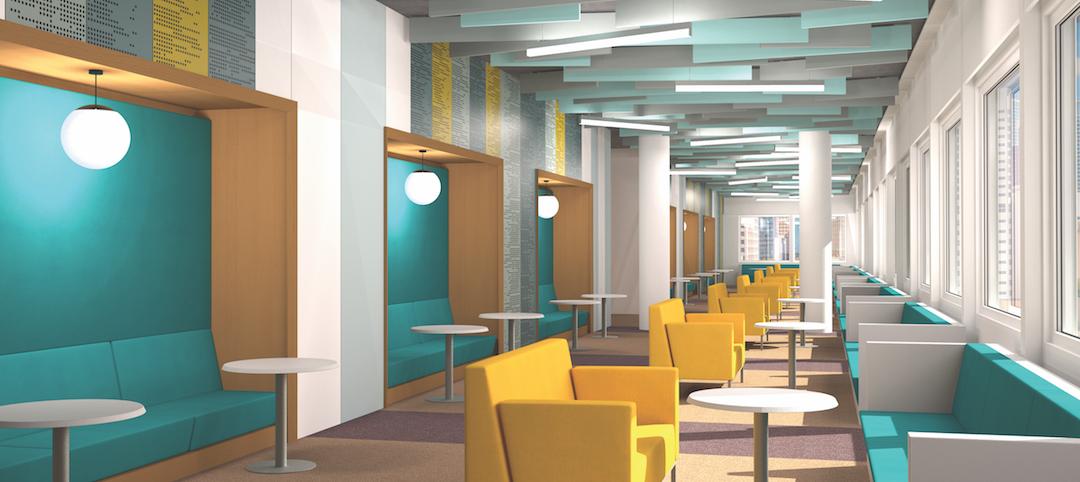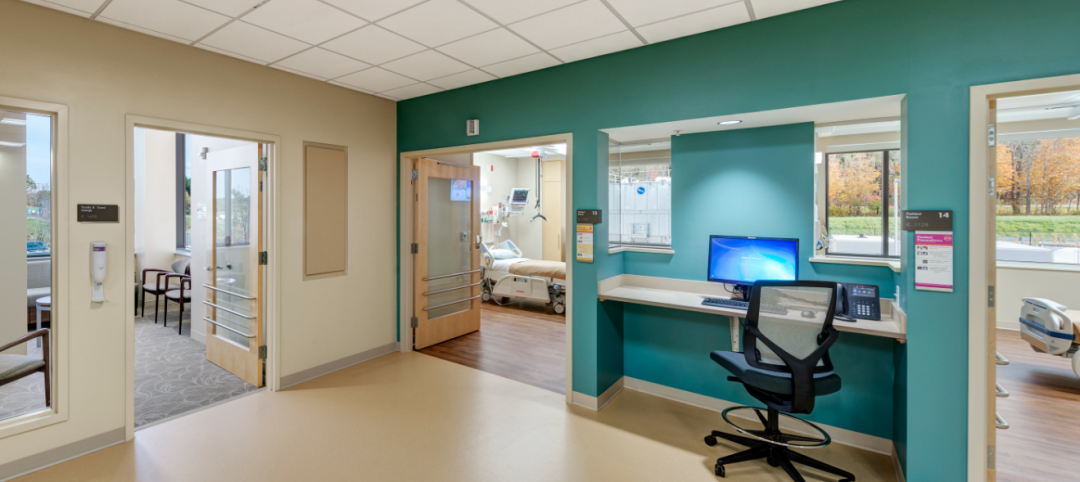1. To optimize a space for speech intelligibility, designers should specify products such as fiberglass ceiling tiles that have a noise reduction coefficient (NRC) of:
A. Less than 0.5
B. Greater than 0.5
C. Exactly 1.0.
D. Greater than 1.0
2. Which of the following statements is NOT true, according to research from John Hopkins University and the University of Kansas?
A. Sound pressure levels in hospitals decrease each year by 0.40 db(A).
B. Sound pressure levels in hospitals are increasing each year by 0.40 db(A).
C. Average speech intelligibility ratings for U.S. classrooms in 2000 were 75% or less.
D. Average sound levels at Johns Hopkins Hospital have exceeded the range at which normal conversation takes place.
3. Which of the following is a design element of a suspended ceiling strategy for sound absorption, sound isolation, or both?
A. Using vibration isolation hangers.
B. An acoustically absorptive ceiling layer with a large air gap behind it.
C. Acoustical ceiling tile on a grid.
D. All of the above.
4. Ceiling tile with a mid-level Ceiling Attenuation Class—or a heavy, rigid ceiling finished with a drywall suspended ceiling with an exposed acoustical plaster system— would be a viable solution for:
A. An energy-efficient acoustical ceiling design.
B. A space that both absorbs and isolates sound.
C. An acoustically high-performing workplace or office.
D. None of the above.
5. Which of the following is NOT a key variable when formulating wall design for ideal sound isolation?
A. Wall mass
B. Air space
C. Plenum temperature
D. Air tightness
6. True or false: If the window area exceeds 10% of the total wall area, then the window and frame will generally dictate the Sound Transmission Coefficient (or sound transmission loss performance) for the entire wall.
A. True
B. False
7. One drawback of concrete floors is the transmission of high-frequency impact noise such as high heels tapping on the floor. Which of the following is a workable solution to this problem?
A. Carpeting
B. Cork tiles
C. Felt underlayments
D. Specifying another kind of flooring
8. MEP systems, especially HVAC systems, can contribute significantly to undesirable ambient noise levels. Which of the following is NOT a step that can be taken to mitigate these noise issues?
A. Specifying quiet equipment
B. Siting the equipment near occupied spaces
C. Correctly sizing the equipment
D. Limiting air velocity
9. True or false: It is not possible to specify daylighting products with lighter surfaces that absorb sound.
A. True
B. False
10. Which of the following standards or guidelines does NOT recognize acoustic elements as essential to sustainability or occupant health?
A. LEED for Healthcare
B. ANSI Classroom Acoustic Standard (ANSI S12.60)
C. LEED for Homes
D. FGI/ASHE Guidelines
Related Stories
Sponsored | Performing Arts Centers | Jan 17, 2024
Performance-based facilities for performing arts boost the bottom line
A look at design trends for “budget-wise” performing arts facilities reveals ways in which well-planned and well-built facilities help performers and audiences get the most out of the arts. This continuing education course is worth 1.0 AIA learning unit.
Mass Timber | Jul 11, 2023
5 solutions to acoustic issues in mass timber buildings
For all its advantages, mass timber also has a less-heralded quality: its acoustic challenges. Exposed wood ceilings and floors have led to issues with excessive noise. Mass timber experts offer practical solutions to the top five acoustic issues in mass timber buildings.
Acoustic Panels | Jun 9, 2022
A fitness center renovation in Calgary focuses on tamping the building’s sound and vibration
Bold Interior Design chose as its solution a lighting/acoustical panel combination.
University Buildings | Mar 9, 2020
Auburn University, Robins & Morton open Construction Field Laboratory
Robins & Morton and Auburn University’s College of Architecture, Design and Construction (CADC) recently celebrated the dedication of the Robins & Morton Construction Field Laboratory.
75 Top Building Products | Dec 12, 2019
Top Building Envelope Products for 2019
Sto's beetle-inspired exterior coating and Dörken Systems' UV-resistant vapor-permeable barrier are among the 28 new building envelope products to make Building Design+Construction's 2019 101 Top Products report.
Sponsored | Ceilings | May 14, 2018
Acoustical ceiling clouds soar above GE Customer Experience Center
They provide dynamic aesthetic along with desired sound absorption
Products and Materials | Feb 19, 2018
Product roundup: 16 sound solutions
Flexi-panel from Extech, Classic Ultra from Icynene, and Heartfelt from Hunter Douglas are just three of the 16 products highlighted in BD+C's February Product Roundup.
Healthcare Facilities | Aug 28, 2015
Hospital construction/renovation guidelines promote sound control
The newly revised guidelines from the Facilities Guidelines Institute touch on six factors that affect a hospital’s soundscape.















